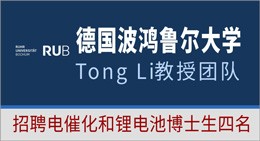当前位置:
X-MOL 学术
›
Chem. Geol.
›
论文详情
Our official English website, www.x-mol.net, welcomes your
feedback! (Note: you will need to create a separate account there.)
Asymmetrical changes of electron-donating and electron-accepting capacities of natural organic matter during its interaction with Fe oxyhydroxides
Chemical Geology ( IF 3.6 ) Pub Date : 2024-05-26 , DOI: 10.1016/j.chemgeo.2024.122189
Yiran Liu , Weijun Zhao , Peng Zhang , Qing-long Fu , Chenglong Yu , Songhu Yuan
Chemical Geology ( IF 3.6 ) Pub Date : 2024-05-26 , DOI: 10.1016/j.chemgeo.2024.122189
Yiran Liu , Weijun Zhao , Peng Zhang , Qing-long Fu , Chenglong Yu , Songhu Yuan
The electron gain and loss of natural organic matter (NOM) plays an important role in the biogeochemical cycling of element and contaminant attenuation. The electron-donating capacity (EDC) and electron-accepting capacity (EAC) of NOM determine its electron exchange ability. However, the influences of bonded matrices on EDC and EAC of NOM remain unclear. Here we investigated the variations in EDC and EAC of NOM during its interaction with Fe oxyhydroxides. Compared to original NOM, the presence of Fe oxyhydroxides slightly decreased the EDC of dissolved NOM by 0.58–2.08 mmol e/g C and of adsorbed NOM by 0.33–2.67 mmol e/g C. However, the EAC of dissolved NOM and adsorbed NOM significantly ( < 0.05) increased by 1.92–14.17 and 3.08–36.67 mmol e/g C, respectively. The excessive increase of EAC was mainly attributed to changes in NOM chemical components, particularly increases in oxidative components such as Fe(III) and quinonoid carbonyls, rather than changes in EDC. For dissolved NOM, the heightened EAC was mainly attributed to the complexation of Fe(III) by carboxyl in NOM. For adsorbed NOM, the boosted EAC was predominantly linked to the enrichment of quinonoid carbonyl through the selective molecular fractionation and the oxidative polymerization of polyphenols in NOM. Our finding highlights the previously overlooked phenomenon of asymmetrical changes of EDC and EAC of NOM during its interaction with Fe oxyhydroxides. The increased EAC could potentially affect various biogeochemical processes, such as methane production, anaerobic ammonium oxidation and microbial Fe(III) reduction.
中文翻译:

天然有机物与氢氧化铁相互作用过程中供电子和受电子能力的不对称变化
天然有机物(NOM)的电子得失在元素和污染物衰减的生物地球化学循环中起着重要作用。 NOM的供电子能力(EDC)和受电子能力(EAC)决定了其电子交换能力。然而,键合基质对 NOM 的 EDC 和 EAC 的影响仍不清楚。在这里,我们研究了 NOM 与 Fe 羟基氧化物相互作用期间 EDC 和 EAC 的变化。与原始 NOM 相比,Fe 羟基氧化物的存在略微降低了溶解 NOM 的 EDC 0.58–2.08 mmol e/g C,吸附 NOM 的 EDC 略微降低了 0.33–2.67 mmol e/g C。然而,溶解 NOM 和吸附 NOM 的 EAC 略有下降。显着 (<0.05) 分别增加 1.92–14.17 和 3.08–36.67 mmol e/g C。 EAC的过度增加主要归因于NOM化学成分的变化,特别是Fe(III)和醌类羰基等氧化成分的增加,而不是EDC的变化。对于溶解的 NOM,EAC 升高主要归因于 NOM 中羧基与 Fe(III) 的络合。对于吸附的 NOM,增强的 EAC 主要与通过 NOM 中多酚的选择性分子分级和氧化聚合来富集醌类羰基有关。我们的发现强调了之前被忽视的 NOM 与 Fe 羟基氧化物相互作用过程中 EDC 和 EAC 不对称变化的现象。增加的 EAC 可能会影响各种生物地球化学过程,例如甲烷产生、厌氧氨氧化和微生物 Fe(III) 还原。
更新日期:2024-05-26
中文翻译:

天然有机物与氢氧化铁相互作用过程中供电子和受电子能力的不对称变化
天然有机物(NOM)的电子得失在元素和污染物衰减的生物地球化学循环中起着重要作用。 NOM的供电子能力(EDC)和受电子能力(EAC)决定了其电子交换能力。然而,键合基质对 NOM 的 EDC 和 EAC 的影响仍不清楚。在这里,我们研究了 NOM 与 Fe 羟基氧化物相互作用期间 EDC 和 EAC 的变化。与原始 NOM 相比,Fe 羟基氧化物的存在略微降低了溶解 NOM 的 EDC 0.58–2.08 mmol e/g C,吸附 NOM 的 EDC 略微降低了 0.33–2.67 mmol e/g C。然而,溶解 NOM 和吸附 NOM 的 EAC 略有下降。显着 (<0.05) 分别增加 1.92–14.17 和 3.08–36.67 mmol e/g C。 EAC的过度增加主要归因于NOM化学成分的变化,特别是Fe(III)和醌类羰基等氧化成分的增加,而不是EDC的变化。对于溶解的 NOM,EAC 升高主要归因于 NOM 中羧基与 Fe(III) 的络合。对于吸附的 NOM,增强的 EAC 主要与通过 NOM 中多酚的选择性分子分级和氧化聚合来富集醌类羰基有关。我们的发现强调了之前被忽视的 NOM 与 Fe 羟基氧化物相互作用过程中 EDC 和 EAC 不对称变化的现象。增加的 EAC 可能会影响各种生物地球化学过程,例如甲烷产生、厌氧氨氧化和微生物 Fe(III) 还原。

































 京公网安备 11010802027423号
京公网安备 11010802027423号